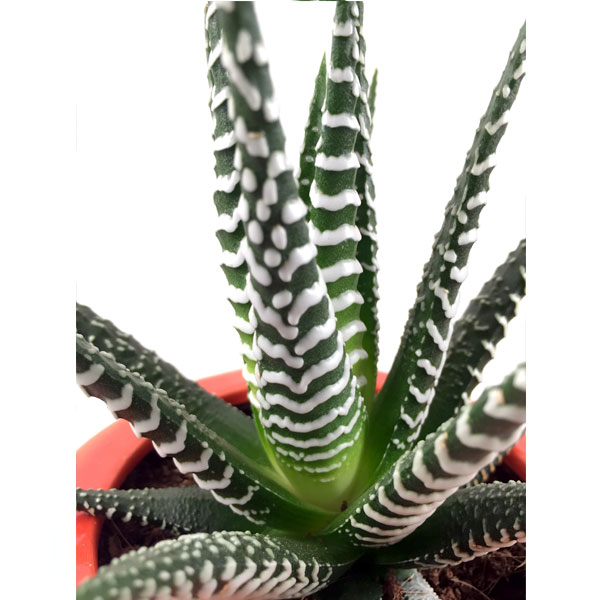
When it does, blooms appear in summer characterized by tiny, tubular pink or white flowers on an inflorescence (a thin tall stem). Haworthia fasciata has a miniature leafy stem which appears to be almost invisible.ĭue to its slow growing nature, the Zebra Haworthia rarely blooms especially when planted indoors. When stressed (mainly due to long hours in the hot sun), the tip of the leaves may turn red. This South African succulent stands out for its erect, multifarious leaves having streaks of white tubercles on the green outer surface which gives it the Zebra effect. They come in many varieties, some of which flower,- there are. This dainty succulent is clump forming and thus it can fit well with other succulents in the same container. This is a Tropical plant, and in colder climates is treated as a Houseplant. Haworthia fasciata is generally a slow-growing succulent that can last a lifetime. This heavily suckering plant forms proliferating rosettes arising from the base. The Zebra plant is a low growing succulent reaching to a height of between 4-8 inches. It’s how they got on my radar - I saw one at the nursery and instantly bought it! The striking, green and white appearance is why they’re so popular.

If you want to see what they look like, be sure to check out our readers’ photos in the comments section further below. Although I sell many green-white stripes Zebra, this. The flowers will normally appear in Summer months on the end of a long stem (inflorescence) if they’ve been treated well during the year. Varicated Haworthia Fasciata or commonly called Zebra Aloe/Plant. Haworthia truncata boasts a totally different look, with its leaves forming clumps instead of the classic haworthia spike.Haworthia limifolia has ridges on its leaves that resemble those of a washboard, earning its nickname “fairy washboard.”.This type of haworthia grows in a thicker rosette form. Haworthia reinwardtii (Zebra Wart) “may or may not induce warts if eaten by a zebras” jokes Water & Light plant shop.Haworthia cooperi also comes in rosette form, but its leaves are bubble-like.

Haworthia fasciata, or Zebra Aloe, has a similar appearance, with pearly warts and thick leaves, but the leaves have a slight curl inward.It has thick, tapered green leaves in a rosette form. Haworthia attenuata is the classic haworthia you’re probably used to seeing. Haworthia (Zebra Cactus / Pearl and Star Window Plant) About the Haworthia Haworthias are dainty succulent houseplants and are frequently compared and confused with Aloes, and Gasteria plants, this is hardly surprising since they're all members of the Asphodeloideae family.attenuata features long, pointed green leaves.

bolusii have “tufted” edges to the leaves. fasciata features horizontal white stripes and is sometimes called the zebra Haworthia. margaritifera has warty white projections on the leaves. In general, the best advice is to buy the most attractive variety based on leaf form and markings, as they all have similar cultural requirements. The main difference between the common species is the size of the leaves and the orientation of the white markings on the leaves. The method was adopted for wool dyeing by European settlers who modified it to create better colours with other metallic mordants.

A low clumping succulent leaves forming rosettes. Aloinopsis spathulata x Nananthus transvaalensis Common Name (s) Soap Aloe,Zebra Aloe, African Aloe.Best indoors throughout the winter and then brought out into the garden in summer This succulent plant native to South Africa (Eastern Cape Province) resembles aloe vera. It belongs to the family Asphodelaceae and not Liliaceae, as you may find in some texts. Will regrow from roots after a mild frost. Also known as zebra haworthia, Haworthiopsis attenuata (formerly known as Haworthia attenuata) is safe for cats, dogs, and even horses. Water during summer, completely dry in winter obscura, Aloe spuria, Aloe trichotoma, Aloe tricolor, Aloe umbellataįull sun. major, Aloe saponaria, Aloe saponaria var. stenophylla, Aloe macracantha, Aloe maculosa, Aloe obscura, Aloe perfoliata var. bicolor, Aloe disticha, Aloe gasterioides, Aloe grahamii, Aloe latifolia, Aloe leptophylla, Aloe leptophylla var.


 0 kommentar(er)
0 kommentar(er)
